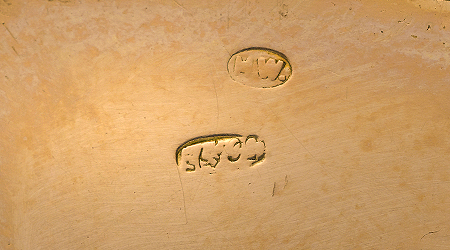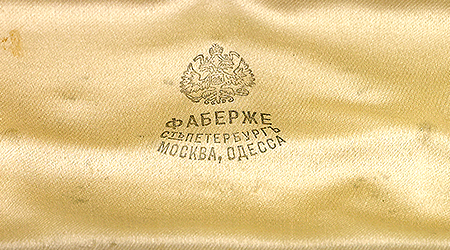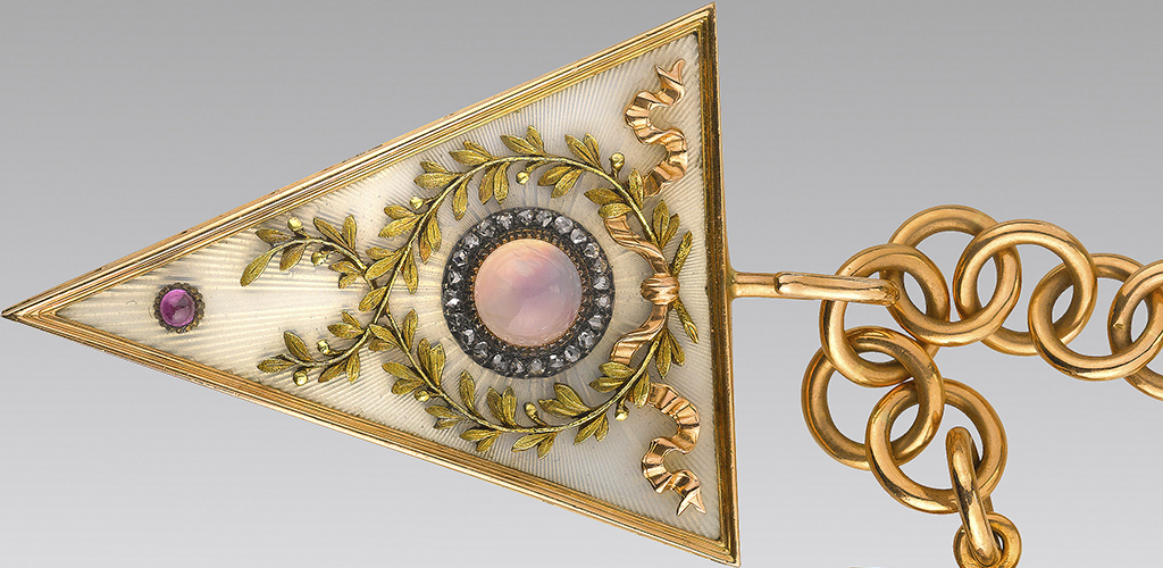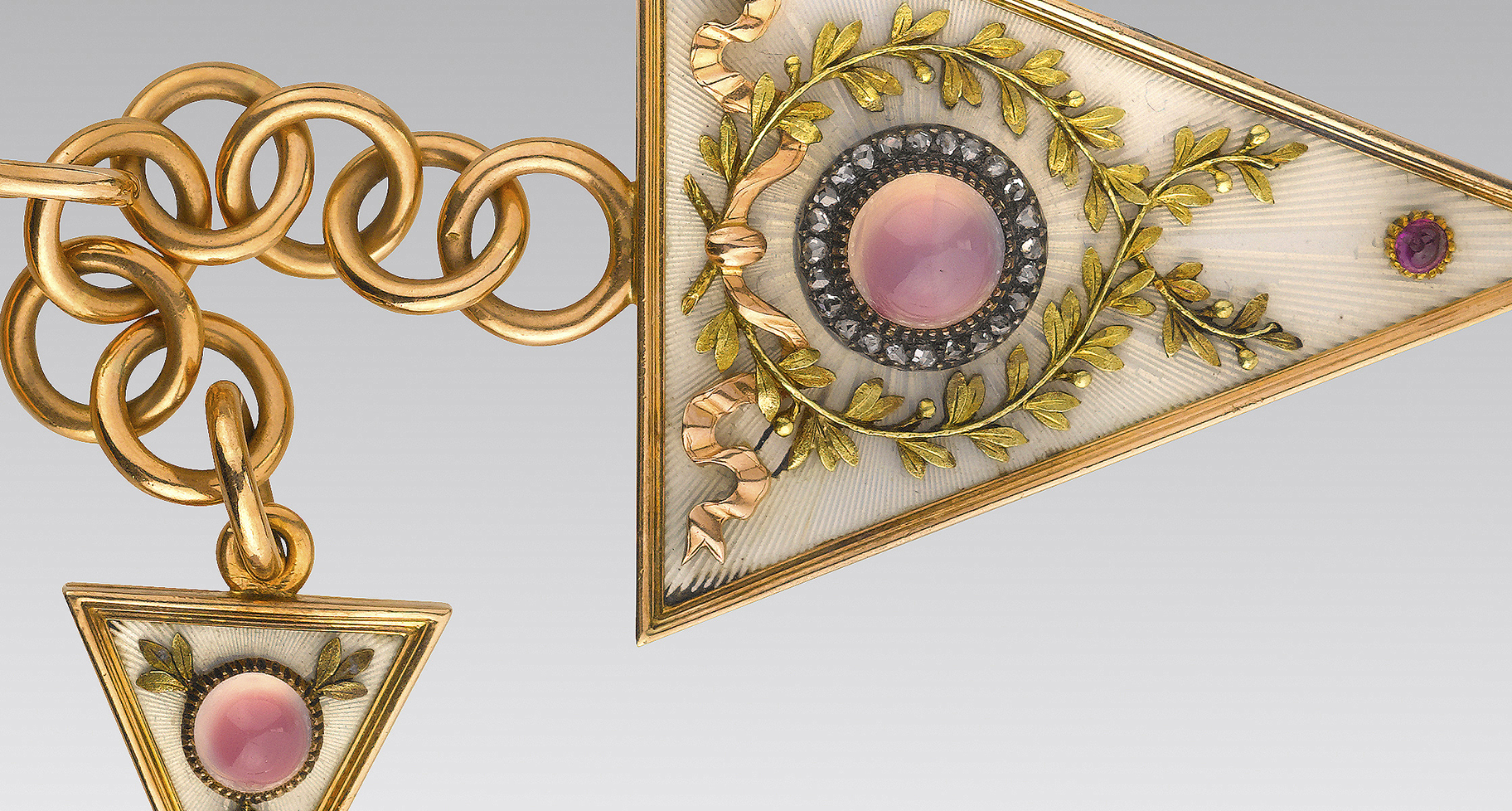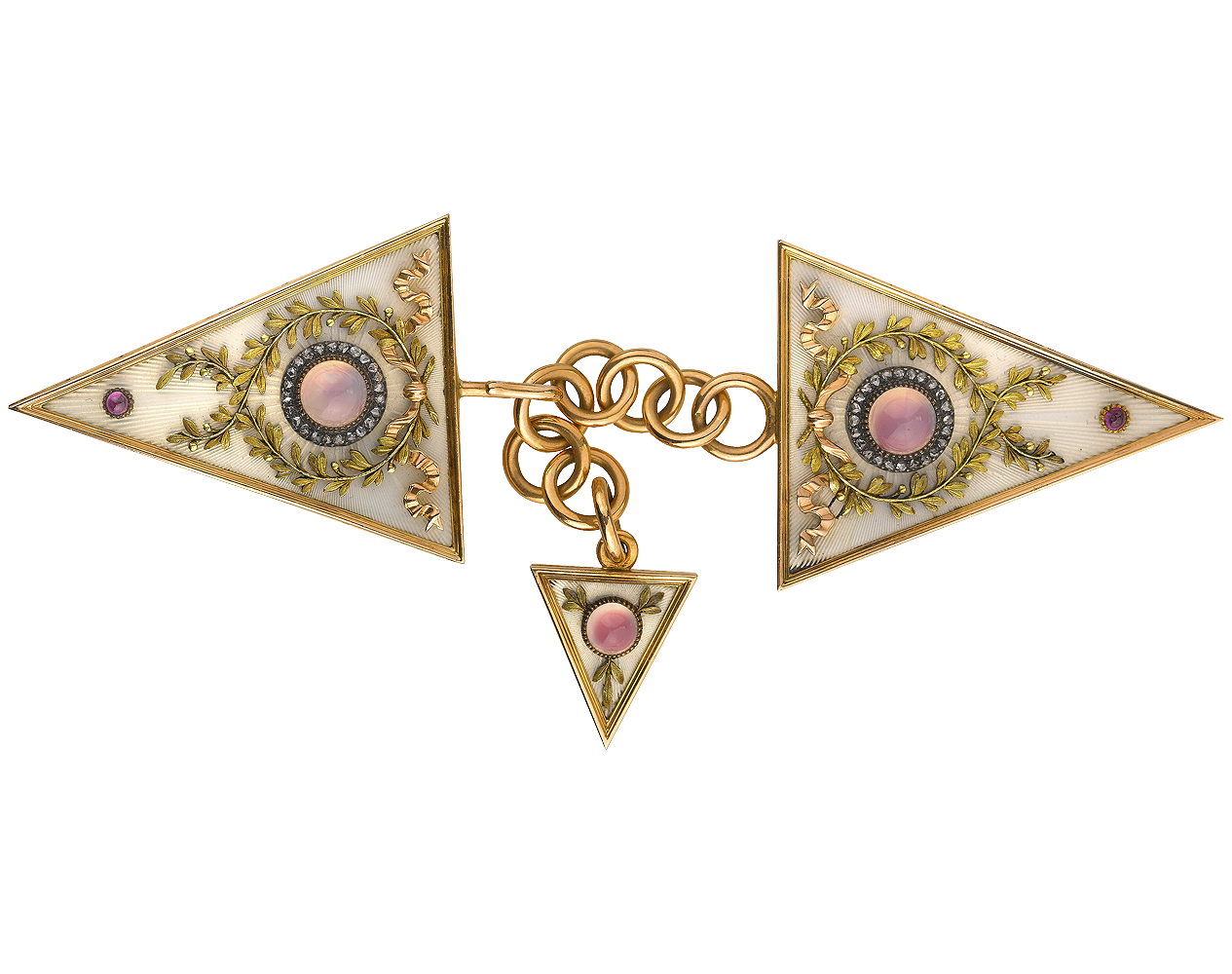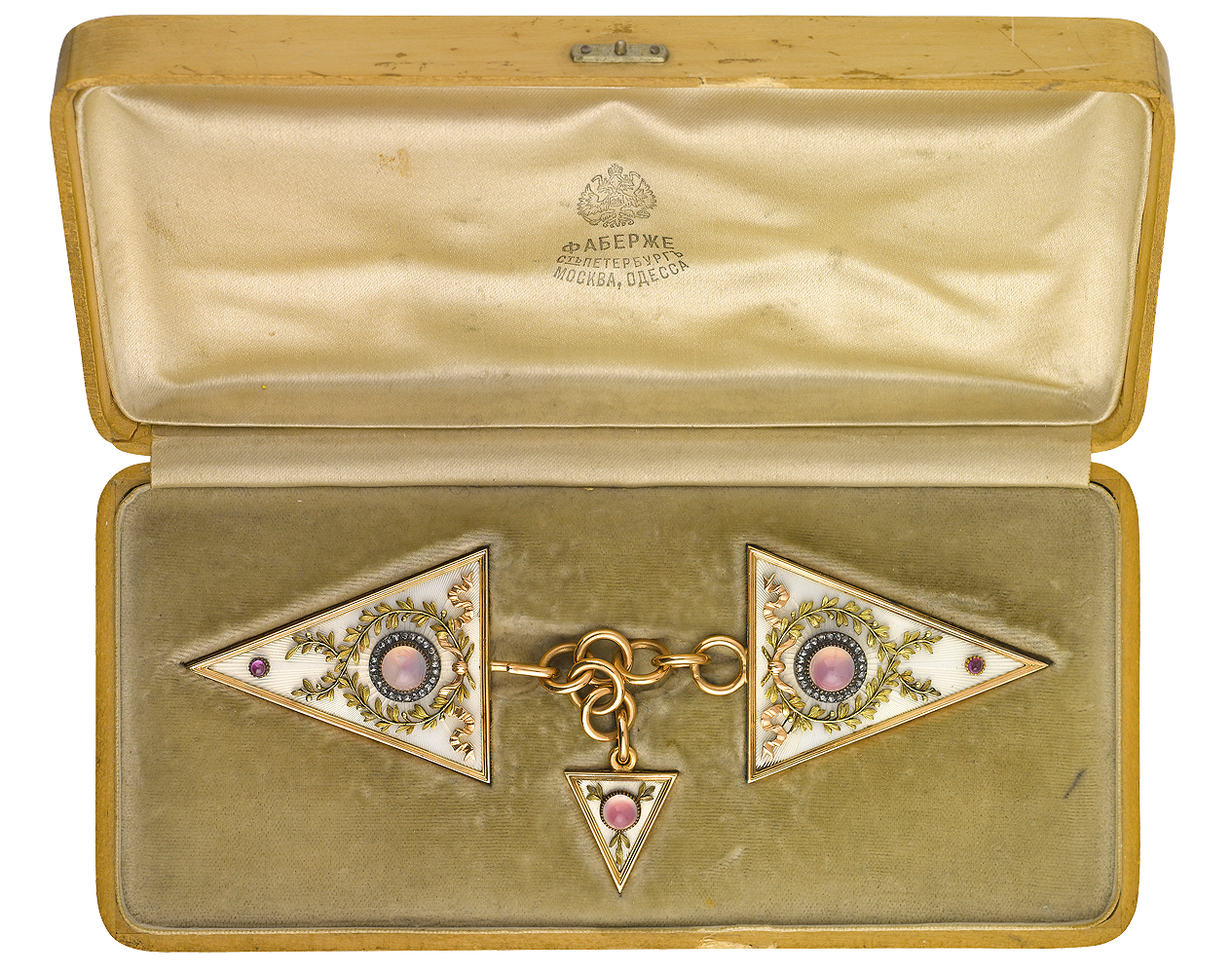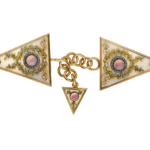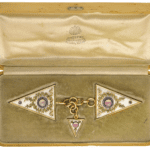Exhibitions
Fabergé: Imperial Craftsman and His World, Wilmington, Delaware, Riverfront Arts Centre, 9 September 2000 – 18 February 2001
Fabergé – Cartier. Rivalen am Zarenhof, Munich, Kunsthalle der Hypo-Kulturstiftung, 28 November 2003 – 12 April 2004
Carl Fabergé and Masters of Stone Carving. Russian Gems, Moscow, The Kremlin Museum, 8 April – 24 July 2011
Bibliography
G. von Habsburg, A. von Solodkoff, Fabergé: Imperial Craftsman and His World, London, 2000, no. 490, p. 208
G. von Habsburg, Fabergé – Cartier. Rivalen am Zarenhof, Munich, 2003, no. 421, p. 276
T. Muntyan, Carl Fabergé and Masters of Stone Carving. Russian Gems, Moscow, 2011, no. 104 p. 122
Two clasps of triangular shape, each with a pink-foiled cabochon moonstone in a rose-cut diamond mount set in a panel of opalescent white guilloché enamel applied with intertwining green and red gold laurel sprays and a cabochon ruby, with palm leaf borders. The clasps are joined by a gold chain which suspends a similar triangular pendant.
Fabergé as a creator of jewellery needs no introduction. His brilliantly designed, highly original, superbly crafted works of art are known by all Fabergé lovers as his crowning glory. With his many thousands of such objects, painstakingly created of hardstone, silver, gold or enamel, much emulated but never equalled, he created an undisputed niche for himself.
The firm’s produced items of joaillerie for the Russian Imperial court. By French definition, these were jewels, of which the value resided primarily in the quality and size of the stones employed. Like Fabergé’s silver, these too, with a few exceptions, have disappeared almost entirely, as they were broken up by the Soviets and sold in Amsterdam, London, Paris and Berlin in the 1920s for the limited value of their stones. What have survived in relatively large numbers, are Fabergé’s bijoux, or what might be termed as “designer” jewels, due to their lesser intrinsic value. These are generally small trinkets, pendants or brooches, made of platinum- and rose-cut diamond-mounted semi-precious stones such as moonstones and chalcedonies, or coloured sapphires, or chrysoprases. Another group is formed of enamelled gold brooches/pendants set with semi-precious stones. These two categories were produced equally by both the Albert Holmström workshop and that of August Hollming, as well as by the smaller workshop of Alfred Thielemann. These jewels appealed to the general public for their accessible price-range and their elegant, highly individual designs. This category of jewellery also comprises such accessories or articles of personal adornment such as buttons and cuff links, belt-buckles and cloak-clasps and pendant watches, which were made by the jewellery workshops, but also occasionally by the leading workshops of Michael Perchin and Henrik Wigström.
